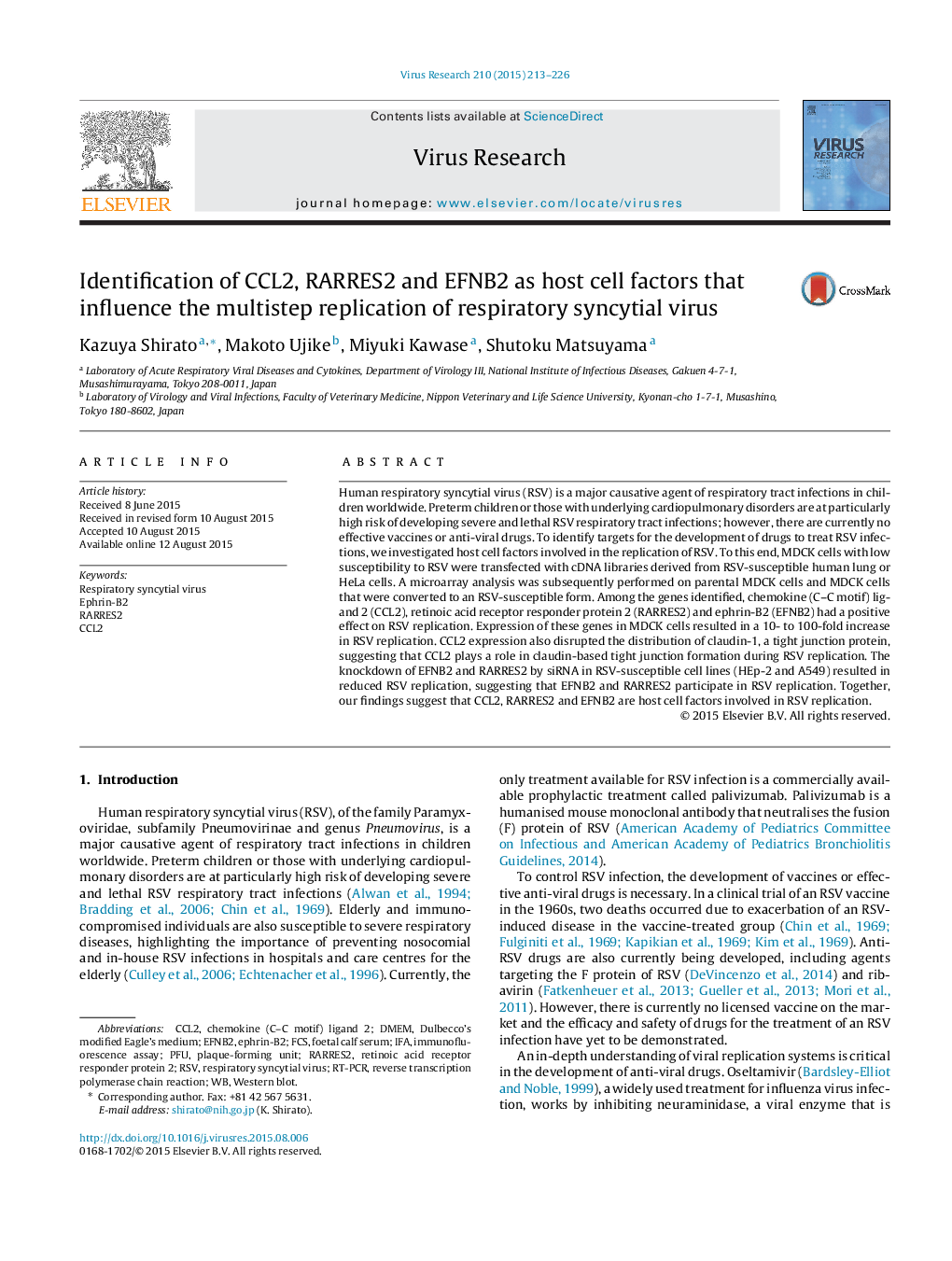| Article ID | Journal | Published Year | Pages | File Type |
|---|---|---|---|---|
| 3428057 | Virus Research | 2015 | 14 Pages |
•MDCK cells had reduced susceptibility at a low m.o.i. RSV infection.•RSV-susceptible MDCK cells were obtained by transfection of cDNA libraries.•CCL2, RARRES2, and EFNB2 were identified by microarray analysis.•Expression and knockdown of identified genes affected RSV replication and spread.
Human respiratory syncytial virus (RSV) is a major causative agent of respiratory tract infections in children worldwide. Preterm children or those with underlying cardiopulmonary disorders are at particularly high risk of developing severe and lethal RSV respiratory tract infections; however, there are currently no effective vaccines or anti-viral drugs. To identify targets for the development of drugs to treat RSV infections, we investigated host cell factors involved in the replication of RSV. To this end, MDCK cells with low susceptibility to RSV were transfected with cDNA libraries derived from RSV-susceptible human lung or HeLa cells. A microarray analysis was subsequently performed on parental MDCK cells and MDCK cells that were converted to an RSV-susceptible form. Among the genes identified, chemokine (C–C motif) ligand 2 (CCL2), retinoic acid receptor responder protein 2 (RARRES2) and ephrin-B2 (EFNB2) had a positive effect on RSV replication. Expression of these genes in MDCK cells resulted in a 10- to 100-fold increase in RSV replication. CCL2 expression also disrupted the distribution of claudin-1, a tight junction protein, suggesting that CCL2 plays a role in claudin-based tight junction formation during RSV replication. The knockdown of EFNB2 and RARRES2 by siRNA in RSV-susceptible cell lines (HEp-2 and A549) resulted in reduced RSV replication, suggesting that EFNB2 and RARRES2 participate in RSV replication. Together, our findings suggest that CCL2, RARRES2 and EFNB2 are host cell factors involved in RSV replication.
